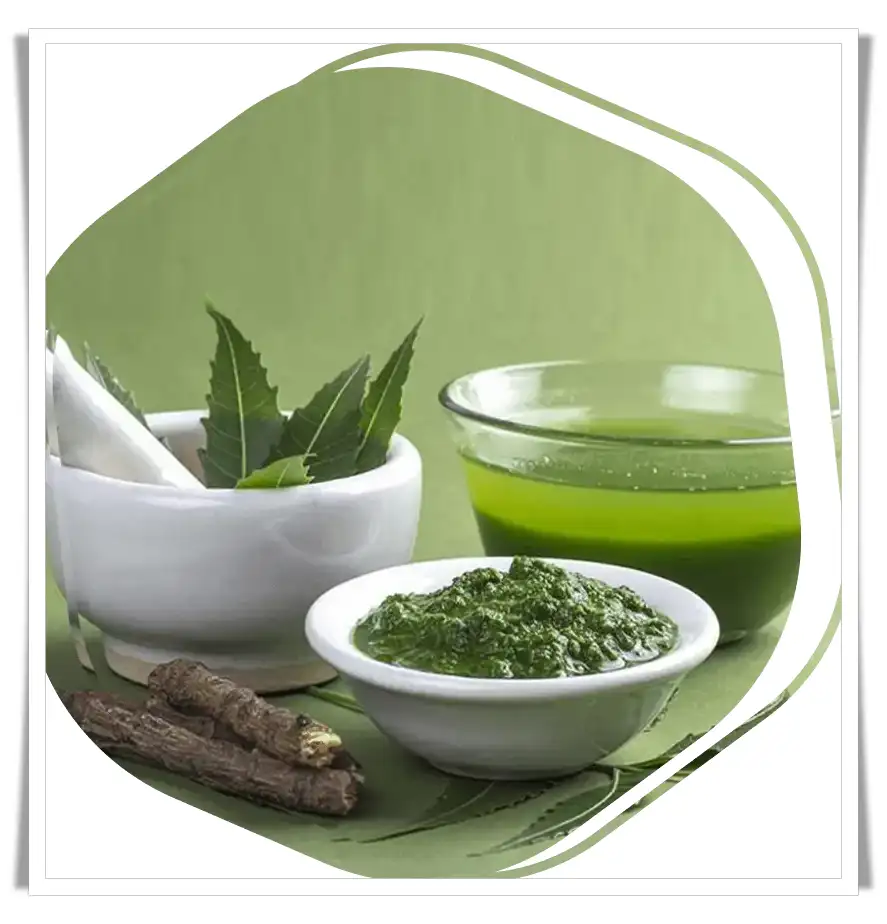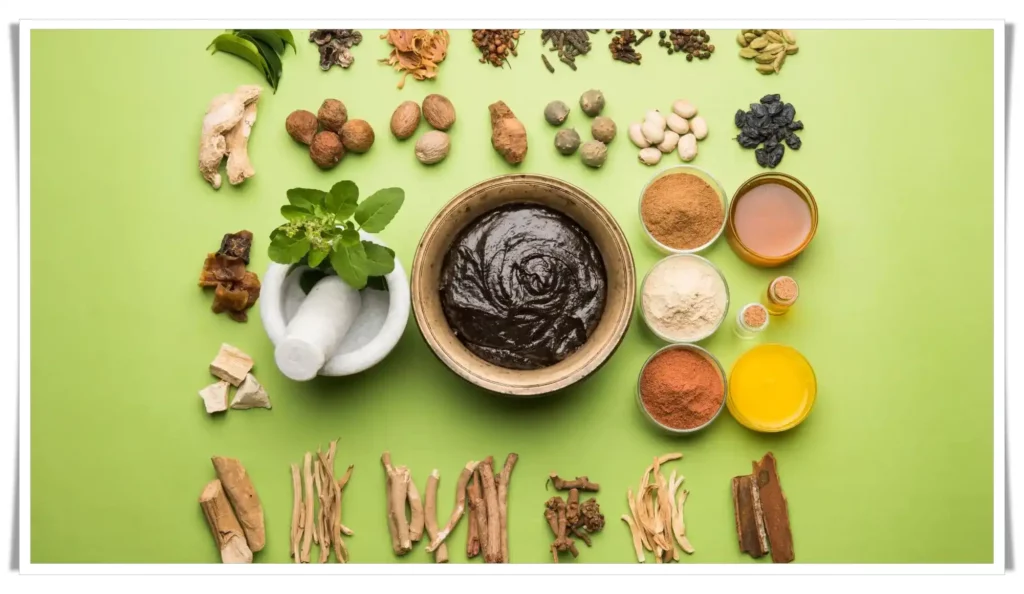What Is Ayurveda for Healthy Body and Mind?
Ayurveda for Healthy Body and Mind is one of the world's oldest holistic (“whole-body”) healing systems developed more than 5,000 years ago in India.
Ayurveda is a system of traditional medicine that originated in India. It is based on the belief that health and wellness depend on a balance between the mind, body, and spirit. Ayurveda emphasizes the use of natural remedies, such as herbs, massage, and yoga, to promote healing and prevent disease.
In Ayurveda, the body is believed to be made up of three main energies, or doshas: Vata, pitta, and Kapha. These doshas are thought to influence a person's physical and mental characteristics and can be balanced through proper diet, lifestyle, and the use of natural remedies.
Please watch the video Ayurveda for Healthy Body and Mind

Ayurveda for Healthy Body and Mind
Ayurveda is used to treat a wide range of conditions, including digestive disorders, stress, and skin conditions. It is also used to promote overall health and well-being.
It is important to note that Ayurveda is not a substitute for conventional medical treatment. If you have a health condition, it is important to speak with a healthcare provider for proper diagnosis and treatment.
Despite all technological advances, modern medicine, and state-of-the-art hospital equipment, why does it seem that people have much bigger baggage in terms of their health?

Ayurveda for Healthy Body and Mind
Good health can be defined not only as the absence of disease but as a state of having a sense of balance emotionally, physically, and mentally.
Balance seems to be the “it” thing nowadays as it is becoming such a rare thing to behold.
Stress, on the other hand, being one of the most apparent manifestations of imbalance is so common it has become a household name.

Ayurveda for Healthy Body and Mind
Ayurveda for Healthy Body and Mind
Ayurveda essentially means the knowledge of life.
The word "Ayurveda" is derived from the Sanskrit words "Ayur," which means life, and "Veda," which means knowledge or science. Together, Ayurveda means the "knowledge of life" or the "science of life."
As a system of traditional medicine, Ayurveda aims to promote health and prevent disease by focusing on balance and harmony within the body, mind, and spirit. It uses a variety of natural remedies, including herbs, massage, and yoga, to achieve this balance and promote healing.
Ayurveda is an integral part of the cultural and spiritual traditions of India and has a long history dating back thousands of years. Today, it is practiced not only in India but also in other parts of the world, including the United States.
It is popular for its extensive natural healing ways that work on illnesses and improve the general wellness of the human body and mind.
The Strategy: Your Constitution and Its Inner Balance
- General Description
- Adjusting the Three Principle Energies of the Body
- Ayurveda as a Complementary System of Healing Assessment and Treatment of Imbalances
According to Ayurveda, each person has a unique constitution, or "Prakriti," which is determined by the balance of three doshas: Vata, pitta, and Kapha. These doshas are believed to govern different bodily functions and characteristics, and they can become imbalanced due to a variety of factors, such as diet, lifestyle, and environmental influences.
To maintain good health and inner balance, Ayurveda recommends following a personalized diet and lifestyle plan that takes into account your individual Prakriti and any imbalances that may be present. This may include incorporating certain foods, herbs, and practices into your routine to support the balance of your doshas and promote overall wellness.
Please watch the video Ayurveda for Healthy Body and Mind

Ayurveda for Healthy Body and Mind
It's important to note that Ayurveda is a complementary and alternative medicine and should not be used as a substitute for conventional medical treatment. If you are interested in exploring Ayurveda, it is recommended to consult with a qualified Ayurvedic practitioner for guidance and support.
To learn more, please, click here!
General rules for adjusting Vata
- Keep warm
- Resist the urge to panic
- Maintain a strategic distance from cool, solidified, or crude nourishments
- Maintain a strategic distance from extraordinary virus
- Eat warm nourishment and flavors
- Keep a customary daily schedule
- Get a lot of rest
General rules for adjusting Pitta
- Maintain a strategic distance from exorbitant warmth
- Maintain a strategic distance from exorbitant oil
- Maintain a strategic distance from exorbitant steam
- Cutoff salt admission
- Eat cooling, non-fiery nourishments
- Exercise during the cooler piece of the day
General rules for adjusting Kapha
- Get a lot of activities
- Dodge substantial nourishments
- Keep dynamic
- Dodge dairy
- Dodge frosted food or beverages
- Fluctuate your daily practice
- Stay away from greasy, sleek nourishments
- Eat light, dry food
- No daytime rests
A decent eating routine and the six tastes
Please watch the video Ayurveda for Healthy Body and Mind

Ayurveda for Healthy Body and Mind
- Sweet
- Sour
- Salt
- Pungent
- Bitter
- Astringent
In Ayurveda, it is believed that the six tastes - sweet, sour, salty, pungent, bitter, and astringent - should be included in every meal to promote balance in the body. Each taste is thought to have specific effects on the doshas and can help to support their proper functioning.
Here is a brief overview of the six tastes and their effects on the body according to Ayurveda:
- Sweet taste: nourishes and builds tissues, calms the mind and nerves, and promotes a sense of grounding and stability. Examples include grains, dairy, and sweet fruits.
- Sour taste: aids in digestion and assimilation, stimulates the senses, and supports the absorption of nutrients. Examples include citrus fruits, fermented foods, and sour cream.
- Salty taste: stimulates digestion, helps to balance electrolytes and supports proper metabolism. Examples include salt and sea vegetables.
- Pungent taste: increases circulation, improves digestion and clears excess mucus. Examples include spices such as pepper and ginger.
- Bitter taste: cleanses and purifies the body, helps to balance hormones, and promotes a sense of clarity and focus. Examples include leafy greens and bitters.
- Astringent taste: contracts and tones tissues, helps to balance fluids in the body and promotes a feeling of lightness and freshness. Examples include beans, legumes, and unripe fruits.
It is recommended to include all six tastes in each meal to promote balance and support the proper functioning of the doshas. However, the specific proportions of each taste may vary depending on your individual constitution and any imbalances that may be present. An Ayurvedic practitioner can provide guidance on how to incorporate the six tastes into your diet in a way that is supportive of your unique needs.
How to Detox
- Set a Date to Implement Your Intention
- Eat a Simplified Diet
- Include the 6 Tastes in Every Meal
- Drink Fresh, Pure Water and Ginger Tea
- Lubricate Your Digestive Tract
- Consider Triphala Supplementation
- Enjoy Daily Self-Massage

Ayurveda for Healthy Body and Mind
Detoxification, or "shodhana," is an important aspect of Ayurveda and is believed to support the body's natural ability to cleanse and eliminate toxins. There are several methods of detoxification that are commonly recommended in Ayurveda, including the following:
Please watch the video Ayurveda for Healthy Body and Mind

Ayurveda for Healthy Body and Mind
- Diet: Following a nourishing, whole foods-based diet that is rich in antioxidants and low in processed and refined foods can support the body's natural detoxification processes. Incorporating plenty of fruits, vegetables, and herbs into your diet can help to support liver function and promote the elimination of toxins.
- Lifestyle practices: Engaging in regular physical activity, getting enough sleep, and practicing stress management techniques such as meditation or yoga can all support the body's natural detoxification processes.
- Ayurvedic herbs and supplements: Certain herbs and supplements, such as Triphala, Amalaki, and shilajit, are believed to support the body's natural detoxification processes and may be recommended by an Ayurvedic practitioner.
- Panchakarma: Panchakarma is a specialized Ayurvedic treatment that is designed to deeply cleanse and detoxify the body. It typically involves a series of therapies such as massage, herbal steam baths, and purgation, and is usually administered by a trained Ayurvedic practitioner.
It is important to consult with a qualified Ayurvedic practitioner before starting any detoxification protocol, as they can help to determine the best approach for your individual needs and ensure that the process is safe and effective.
Dinacharya: Daily morning routine
- Tongue Cleaning
- Oil Pulling
- Gum Massage
- Drink Warm Lemon Water
- Elimination
- Cleaning nasal passageway
- Self-Abhyanga
- Ear Oil
- Asana
- Pranayama
- Meditation
- Shower & Skincare
- Wash Breakfast
- Tea
- Eye
Please watch the video Ayurveda for Healthy Body and Mind

Ayurveda for Healthy Body and Mind
Dinacharya is a daily routine that is recommended in Ayurveda to promote balance and overall health. It includes a series of practices that are meant to be performed each morning in order to reset the body's natural rhythms and set the stage for a productive and healthy day.
Here are some common elements of a dinacharya routine:
- Waking up at the same time each day: Establishing a consistent wake-up time can help to regulate the body's natural sleep-wake cycle and promote better quality sleep.
- Oral hygiene: Brushing the teeth and tongue, and using a natural mouthwash, can help to clean the mouth and support overall oral health.
- Self-massage: Massaging the body with warm oil can help to nourish the skin, improve circulation, and promote a sense of relaxation.
- Exercise: Engaging in some form of physical activity, such as yoga or gentle stretches, can help to energize the body and improve overall physical health.
- Skincare: Cleaning the face and body with a natural cleanser and moisturizing the skin can help to keep the skin healthy and radiant.
- Meditation or mindfulness practices: Taking time to sit quietly and focus the mind can help to reduce stress and improve mental clarity.
- Breakfast: Eating a nourishing breakfast that includes all six tastes can help to support energy levels and overall health.
It is important to keep in mind that a dinacharya routine should be tailored to your individual needs and preferences, and may vary depending on your unique constitution and any imbalances that may be present. Consulting with an Ayurvedic practitioner can help you to design a dinacharya routine that is best suited to your needs.
A panchakarma program today will usually include the following:
- Herbal oil massages
- Steam baths
- Cleansing enemas
- Nasal administration
- Gentle laxatives (senna)
- Specialized diet
List of Ayurvedic Treatments
- Pain Management
- Depression and Anxiety
- De-Toxification
- Gastric Problems
- Weight Loss
- Skin & Hair Care
Advantages of Ayurveda
- Ayurveda is the science of life – it is not meant just for curing diseases but also for living a healthy life
- It heals holistically and does not cure only the symptom
- It recommends correct food habits & lifestyle as per the prakruti of a person
- The medicines used in Ayurveda are natural and hence have minimal to no side effects
- It is not very expensive;

Ayurveda for Healthy Body and Mind
Human Body
In the human body, these five Mahabhutas are explained in terms of Doshas, Dhatus, and Malas…” The play of the five proto-elements or the Pancha Mahabhutas is not restricted to the physical body only. It also manifests itself in the mental realm as well.
The five elements are:
1) Space (Aakash): This element represents space, air, ether, etc., which is a part of all objects.
2) Water (Jal): This element represents water, liquid, sap, etc., which is found in all living beings.
3) Fire
Ayurvedic Medicine
Ayurvedic medicine focuses on holistic health and wellness and is the opposite of a “one-size-fits-all” approach. It’s based on the belief that each person has unique needs, so it takes into account your age, gender, lifestyle, diet, environment, emotional state, and physical condition to create an individualized treatment plan for you.
The best way to learn about Ayurveda is through personal experience. If you’re interested in trying Ayurveda as part of your overall healthcare regimen.
While Ayurvedic medicine isn’t focused on dieting, it can be helpful for maintaining a healthy weight. It’s thought that certain foods have specific effects on the body:
Please watch the video Ayurveda for Healthy Body and Mind

Ayurveda for Healthy Body and Mind
Fruits and vegetables are believed to promote longevity by improving digestion and cleansing the blood. They also help prevent disease because they’re high in antioxidants.
Grains such as rice, wheat, oats, barley, and corn are considered cooling and grounding. They’re good sources of protein and fiber, which keep you full longer.
Mental Health
Yet Ayurveda also considers the role of the Gunas as factors of mental health and well-being and yoga considers the Doshas relative to physiological functioning.
Please watch the video Ayurveda for Healthy Body and Mind

Ayurveda for Healthy Body and Mind
Ayurvedic medicine is based on a holistic approach, which means that it takes into account not only physical aspects but also psychological ones. The body has an inborn intelligence, which can be activated by proper nutrition and exercise. This leads to a state of balance and harmony between mind, body, and spirit.
The main goal of ayurvedic treatment is to restore this balance.

Ayurveda for Healthy Body and Mind
Mental health, cognitive decline, falls, the health of sense organs and joints, and staying connected with the community are other challenges.
“The elderly population is growing rapidly in India. The number of people aged 60 years or older will increase from about 40 million today to more than 100 million by 2050,” said Dr. Srinivasan. “This means that we need to prepare for a major challenge. We have to make sure that our healthcare system can meet this demand.”
Ayurvedic Practitioners
Restoring balance to the channel of the mind can involve a diverse array of therapeutic strategies, and it is certainly ideal to seek the guidance of a trained Ayurvedic practitioner to guide you in your journey.
Please watch the video Ayurveda for Healthy Body and Mind

Ayurveda for Healthy Body and Mind
Ayurveda has been practiced for thousands of years as an effective system of health care that addresses the whole person—body, mind, and spirit. It’s not surprising that this ancient healing tradition has become increasingly popular among Westerners who are seeking natural alternatives to conventional medicine.
Ayurvedic practitioners focus on maintaining the balance of energy through diet, exercise, and mindfulness which they believe is essential to overall health.
The Ayurveda Diet: What Is It?
The Ayurveda diet is a combination of foods that are considered healthy for your body. The diet is based on the belief that food has an effect on our bodies in many ways. For example, eating certain types of food can help us feel more energetic or calm down when we’re feeling stressed out.
The Ayurveda diet is a traditional system of nutrition that is based on the principles of Ayurveda, a system of medicine that originated in India. According to Ayurveda, the key to good health is maintaining balance in the body, and this can be achieved through a diet that is tailored to an individual's unique constitution, or "Prakriti."
Please watch the video Ayurveda for Healthy Body and Mind

Ayurveda for Healthy Body and Mind
The Ayurveda diet is centered around the belief that food is medicine, and that the right foods can support the balance of the doshas (Vata, pitta, and Kapha), which are believed to govern different bodily functions and characteristics. The goal of the Ayurveda diet is to provide nourishment for the body and mind while supporting the proper functioning of the doshas.
The Ayurveda diet is typically plant-based, with a focus on whole, nourishing foods such as grains, legumes, vegetables, and fruits. It also emphasizes the importance of including all six tastes (sweet, sour, salty, pungent, bitter, and astringent) in each meal to promote balance in the body.
The specific recommendations for an Ayurveda diet may vary depending on an individual's unique Prakriti and any imbalances that may be present. It is recommended to work with a qualified Ayurvedic practitioner to determine the best diet and lifestyle plan for your individual needs.
Science of Life
In Sanskrit, the word Ayurveda translates to “the science of life.” In Western medicine, Ayurveda is classified as complementary and alternative medicine CAM carries a stigma, as many Western medicine practitioners believe it’s not based on science and provides treatments that are unproven and ineffective.
Please watch the video Ayurveda for Healthy Body and Mind

Ayurveda for Healthy Body and Mind
Ayurveda is the traditional healing system from India that is literally translated as ‘the science of life.’ Through healthy daily practices and aligning with natural rhythms, one can prevent disease and create health on a daily basis.
However, Ayurvedic medicine has been practiced for thousands of years in India and other parts of Asia, with more than 5 million people practicing this form of medicine today. It’s also gaining popularity in the United States, where there are now over 100 schools offering Ayurvedic education programs.
Blood Flow
Dry brushing is a traditional Ayurvedic practice used to detox your lymphatic system and recharge and exfoliate your skin.5 “This ritual triggers an improvement in circulation and blood flow”.
The best way to dry brush? Lie down on your back, with your arms at your sides and palms facing up. Start by gently massaging the area you want to cleanse. Then use circular motions as if you were scrubbing away dirt. You can also apply pressure using your fingertips or knuckles.
Please watch the video Ayurveda for Healthy Body and Mind

Ayurveda for Healthy Body and Mind
Vata influences bodily movements, such as the movement of limbs and blood flow. Vata is also associated with the mind and emotions.
Approach to Health
An Ayurvedic tradition is a holistic approach to health and healing. It focuses on the mind, body, and spirit as one whole being.
It is a consciousness-based approach to health and well-being. Ayurveda and Yoga Therapy:
If you have questions or want to comment, please leave them below and I will answer as soon as I can. Thank you for reading ''Ayurveda for Healthy Body and Mind''





Pingback: 12 Foods That Must Be Organic! All You Need To Know! - bc-educate
A fascinating discussion is definitely worth comment. I do think that you ought to publish more about this topic, it may not be a taboo subject but typically people dont speak about such issues. To the next! Many thanks!!
Pingback: What Are The Best Foods For Your Health? - bc-educate
I don’t think the title of your article matches the content lol. Just kidding, mainly because I had some doubts after reading the article.
Wow, incredible blog layout! How lengthy have you ever been running a blog
for? you make running a blog glance easy. The full look of your website is excellent,
as well as the content! You can see similar: dobry sklep
and here sklep internetowy
Your point of view caught my eye and was very interesting. Thanks. I have a question for you.